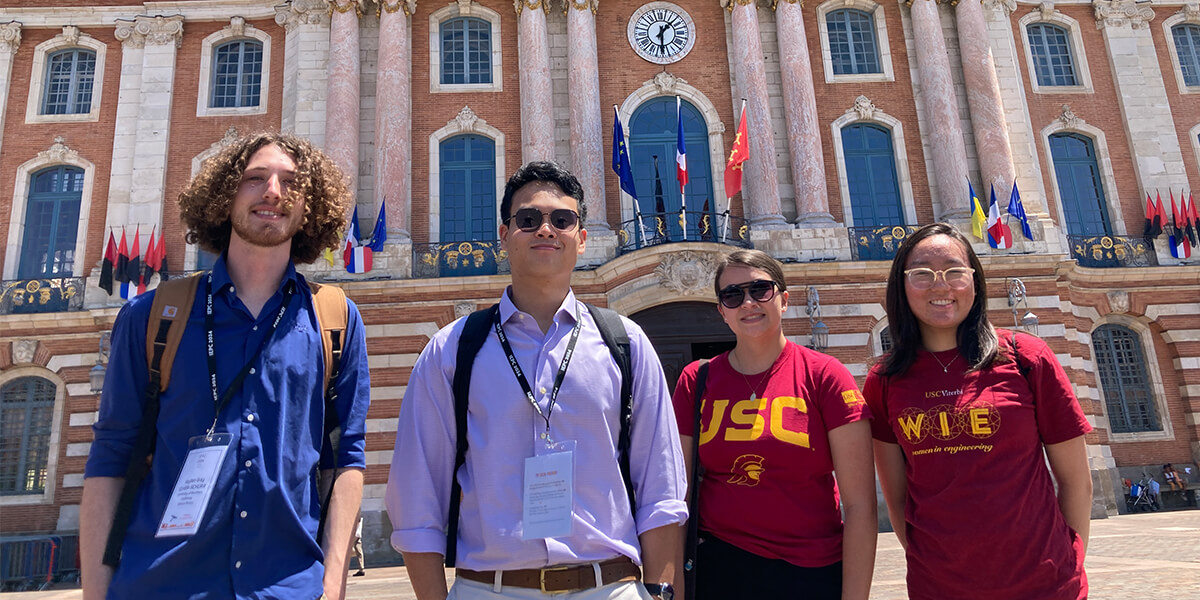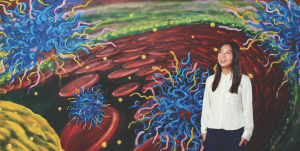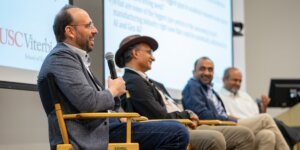
Kayden Elmer-Schurr, Max Wu, Olivia Kukar and Emily Lo at the 38th International Electric Propulsion Conference (IEPC) in Toulouse, France
In June 2024, USC Viterbi undergraduate students Kayden Elmer-Schurr, Max Wu, Olivia Kukar and Emily Lo attended the 38th International Electric Propulsion Conference (IEPC) held in Toulouse, France, where they presented a paper summarizing recent effort to develop a low-power solid-fuel plasma thruster for de-orbiting CubeSats
This work is being conducted through the Advanced Spacecraft Propulsion and Energy (ASPEN) student club, co-advised by Profs. Matthew Gilpin, associate professor of Aerospace and Mechanical Engineering Practice, and Lubos Brieda, lecturer in Astronautical Engineering, which as of 2024 is also available for credit under AME-491.
IEPC is the premier meeting for students, faculty and industry researchers working on spacecraft thrusters that utilize electromagnetic fields to accelerate plasma (ionized gas) to produce thrust. These devices include gridded ion thrusters, Hall effect thrusters, MPDs, electrosprays, vacuum arc thrusters, as well as novel concepts such as the adamantane-based device being developed by ASPEN.
As club lead Olivia Kukar noted, “Attending the International Electric Propulsion Conference was an amazing opportunity that offered unparalleled networking opportunities with leading experts in the field. We were able to receive valuable feedback from experienced professionals and learn about their current research endeavors. Moreover, it helped us integrate more deeply into the electric propulsion community, fostering collaborations that will benefit our future endeavors and help to grow our lab into a better experience for all current and future members.”
Future plans include optimization of the current design through numerical simulations, improved characterization of thrust and plume properties through more robust instrumentation, and the development of a flight unit for possible integration with USC SERC CubeSats.
Published on July 16th, 2024
Last updated on July 16th, 2024













